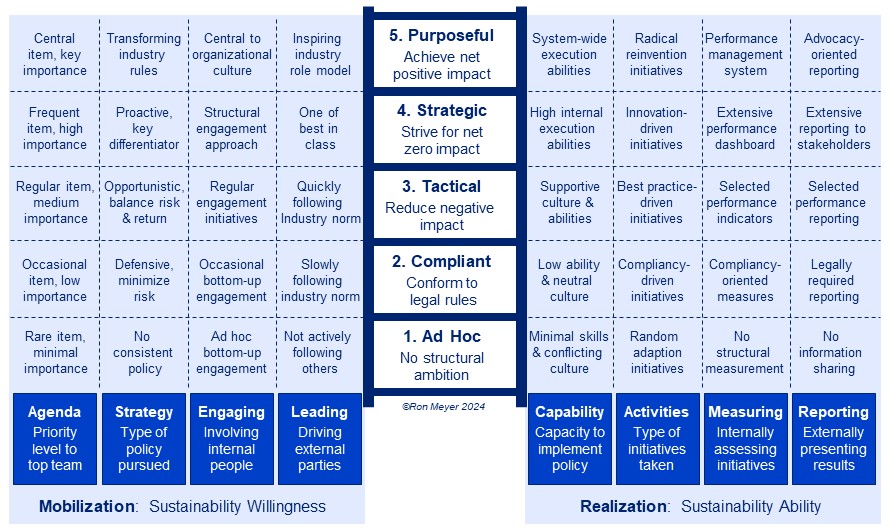A product or practice is sustainable if it can be continued over a longer period of time without depleting natural or social resources. So, sustainability is the quality of engaging in current activities in such a way that future possibilities are not diminished.
Organizations have always been concerned with their own sustainability, wanting to ensure their survival as a business or a not-for-profit actor. But more recently, organizations have paid increasing attention to the sustainability of their surroundings, given the organization’s impact on the environment and society (the indirect consequences that economists call externalities).
The Sustainability Maturity Ladder outlines the five levels of sustainability that organizations can achieve. Typically, organizations will progress through each level as a developmental stage, gradually climbing the ladder to become more mature as sustainable organization. The framework details the characteristics fitting to each stage, although in practice organizations will not neatly fall into these five categories, nor go through all stages in the same way and at the same speed. The framework is intended to help organizations map where they stand and suggest what a next development step could be.

The five development levels on the ladder are:
Each of these five development levels has eight distinguishing characteristics: